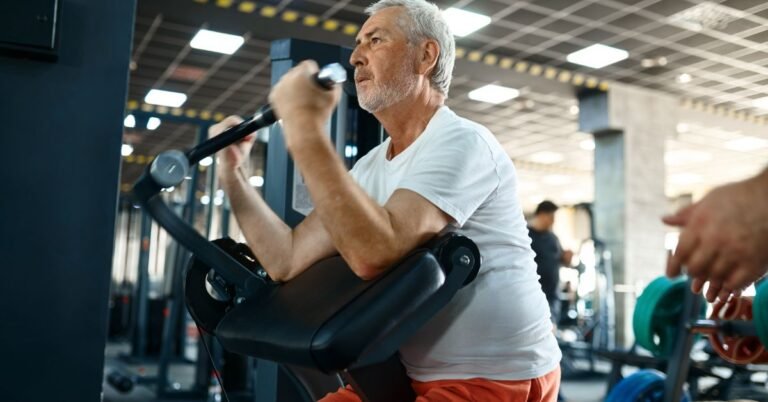“How can I motivate myself to change my behaviour?
“How do I stay motivated?”
“How can I increase my motivation?”
These are probably some of the most important questions to be asking yourself when you are wanting to start and continue on any lifestyle change. Starting a new fitness or training regime means you have to change your behaviour, and mostly importantly, maintain this behavioural change.
Getting motivated can be difficult at any age, but is especially tougher the older we get, as motivation requires energy and a certain amount of physical and mental fitness. Aching joints, fatigue and fading strength levels will no doubt deplete motivation levels. Motivation is an emotion and like many emotions it can wax and wane.
However you have made a great start by not viewing ageing as a downward spiral and you are demonstrating your intention to change by even reading this post and considering wanting to improve your fitness levels. As discussed in many of our previous posts, regular physical activity, especially strength training, has numerous health benefits. But the important word here is ‘regular‘ as we need to maintain and continue that physical activity (and not become one of the many who drop out or give up too soon).
One of the key tips that experts in motivation and behaviour change often recommend when embarking on a lifestyle change is to use a behavioural change model.
This post is designed to educate you about a behavioural change model, in order to help you “work out” your current level of motivation and commitment, and most importantly how you can step up to the next level!
A highly recommended model is the Five Stages of Change Model [Prochaska & DiClemente 1991] .
What we’ll cover:
The Five Stages of Change
Contemplation: At times you acknowledge that there is a problem, and that maybe you should do something about it. But you aren’t yet ready or sure of wanting to make a change. You are saying to yourself “I might”, or “maybe I should”.
Preparation/Determination: You are getting ready to change. You are trying to find out more information to allow yourself to make the change. You are saying “I will”.
Action/Willpower: You are changing your behaviour by taking action. You are saying “I am now doing it”.
Maintenance: You are maintaining the behaviour change. You are saying “I am going to carry on with this behavioural change”
Relapse: You return to old behaviours and abandon the new changes. You are saying “I am not doing this anymore”, you might come up with some excuses as to why. You may be saying “I might, or I will start again soon”. So, the cycle goes round again…
The understanding of the above stages can help you move forward to success, as it can determine your readiness to change, examine the reasons why you want to change, strengthen your will to succeed, and help you move from one stage to the next.
We will go into a bit more detail about each stage below:
Contemplation Stage
If you are a contemplator you are weighing the benefits of change against the commitment and effort it will take. You are starting to consider the importance of starting to exercise, for example. You have considered the potential benefits along with having identified the personal consequences and implications of staying as you are. Your thoughts and opinions may be evenly balanced while you are considering the advantages and disadvantages of making a change.
Often you remain in this stage if you feel the pros in favour of behaviour change are outweighed by the relative cons, difficulties and doubts that you have about starting. Weighing up the pros and cons is normal when considering changing something and starting a new pattern of behaviour, they may carry equal weight in your mind.
This stage is characterised by ambivalence (you want to proceed and change something, but you are also relatively comfortable in your current state of being). Change will require new commitments and you can always make a case for not being able to keep the promises you make with yourself.
This very common feeling of ambivalence is often not acknowledged when starting something new. It will help to recognise and accept your ambivalence. You are not alone with this feeling, everyone feels ambivalent at times to move on however you do need to address it.
This can be achieved in the following ways:
1) Recognize and accept your ambivalent feelings and be OK with not always being OK, do not judge yourself.
2) Remind yourself that no person or situation is perfect and that all people and circumstances have both positive and negative aspects. This is especially true when it comes to making life changes.
3) Write down your ambivalent feelings you have towards starting your behaviour change – starting an exercise programme for example. Evaluate the pros and the cons.
4) Amplify the parts of you that wish to create change, all the positive factors and increase these. Talk with others who will motivate you.
5) Acknowledging the feelings and barriers that might get you stuck and stop you getting started (for example a lack of time or knowledge) and work on ways to address these. Give yourself permission to plan out times within your week for you. You can start slow with small steps. You can promise yourself you will learn and find out more.
Having “worked out” any ambivalence issues and assessed your own readiness to change you are no longer a contemplator and are ready to move into the preparation stage.
Preparation Stage
You have consciously decided to start an exercise programme. Your motivation and readiness to change is reflected in statements such as “I really do need to do something about building up my levels of energy and fitness, what can I do about it?”
You are likely in this stage if you are reading and gathering information from this website. So well done! Do not skip this stage by moving straight into the action stage, as you may not be fully committed yet. Do your research, accept what it is going to take to make a lifestyle change. Keep your plans for exercise realistic and attainable. Set yourself small goals with time-frames, and write these goals down to make yourself accountable.
You know you are prepared to move into the action stage when you fully understand the reasons for wanting to exercise and make the commitment to change.
Action Stage
You are now implementing your plan, following a new exercise regime (for example our beginners strength training programme) and you are working towards your goals. You are becoming more consistent with the regime of working out and setting goals for yourself.
However you still at times may be recognising dips in motivation and saying “I need to be more committed to this programme”. This stage requires the most commitment in time and energy, and some dips are completely normal! Accept and acknowledge this, and move on.
Tips to keep your motivation levels high and to move into the maintenance stage are:
1) Reach out for support when needed. Change is not easy. Let others know what you are doing and why. Friends and family will want you to succeed, and may even want to join you on your journey which can be a great boost to your motivation. Telling others about what you are doing also makes you more accountable.
2) Make it fun. You will never be able to stay motivated if you hate the type of exercise you are doing. Find an activity you love, put some music on whilst you do, get your endorphins flowing!
3) On occasions review your commitment to yourself. Review your goals you set and why.
4) Give yourself healthy rewards from time to time as positive reinforcement. This can be key!
Maintenance Stage
You are now a good few months into your fitness programme. It is getting to become a routine and feels more natural. You are enjoying this new habit and the benefits of it. The goal of the maintenance stage is to maintain this routine and the commitment you have.
Keep reminding yourself of the benefits and what you are striving for.
To keep in the maintenance stage
1) Look for new ways to exercise and stay active occasionally, you don’t always need to follow the same fitness programme every week. A bit of variety can keep you interested and motivated.
2) Reassess your goals you set when you started. Perhaps you have achieved them and you can set some new ones? Or perhaps they just need adjusting?
3) Share your success with others, tell friends and family how you are feeling having started a new exercise programme. Show off a bit!
4) Develop coping strategies and have a contingency plan when things go wrong or get in the way. If you have missed a few workouts and haven’t been able to exercise for a while, don’t worry! Have a plan for how to get started again. You are likely going to want to start back slightly slower, and that’s OK.
Relapse Stage
This is when you have stopped and taken a detour back to old habits. Maybe it has been a few weeks or months that you haven’t managed to fit in any exercise.
Focus on self-forgiveness. Let go of any guilt or disappointment. This relapse stage is also a normal part of behaviour change. You may be tempted to give up your change and goals altogether, but instead you should take this as an opportunity to learn. What went wrong? Why did you stop?
Remember, relapse is natural and a normal part of change. Addressing the reasons that caused you to relapse, and considering again all the reasons you wanted to make the change in first place, can actually make you more determined and stronger!
We hope this description of the behavioural change model has helped you to recognise what stage you are in and to acknowledge what you need to do to move forward. You should come back to this post throughout your behavioural change, it can help to re-evaluate your progress in moving up and down through these stages and remember it is normal and natural to regress.




